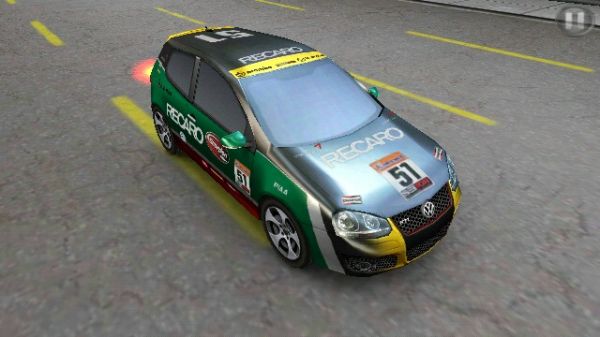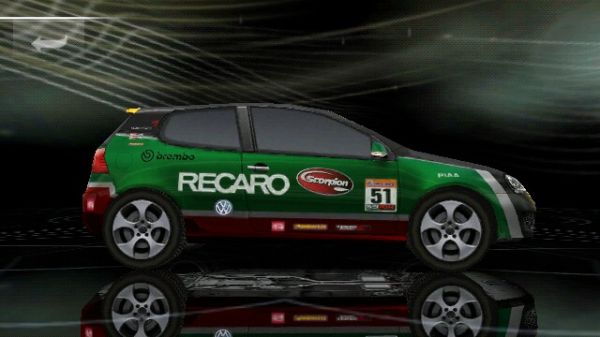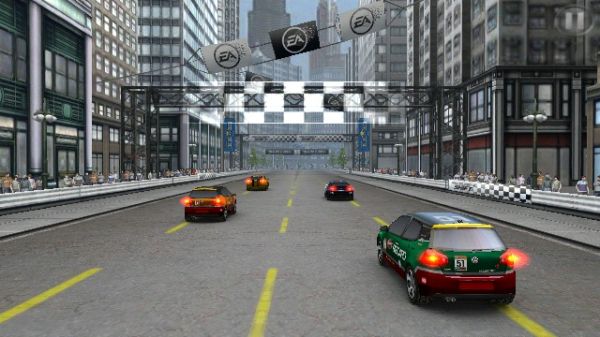Nokia N8 Review: Nokia's New Flagship
by Mithun Chandrasekhar on January 12, 2011 1:00 AM EST- Posted in
- Smartphones
- Nokia
- N8
- Symbian
- Mobile
Look who’s calling the shots…
The N8 represents many firsts for Nokia. It is the first phone to be based on the Symbian^3 platform. It is the first Nokia phone to carry a 12MP camera sensor. It is also the first Nokia phone to have a discrete GPU. And finally, it is the first mainstream Nokia phone to be multi-touch capable (and just the 2nd to have a capacitive screen) and have a GPU accelerated UI, both of which are as a result of switching to Symbian^3. And when it comes to the display and what’s driving it, the Nokia N8 doesn’t disappoint.


NFS Shift HD running on the BMC2727 in the Nokia N8
While I’ll get to the biggest change in the N8 that is the Symbian^3 OS in a while, Nokia has also updated what’s calling the shots behind the scenes. Up until Symbian^3 came along, Nokia rarely ever bothered with including a GPU in its phones and even when it did, it was never really put to any good use. Its last N-Series flagship, the N97, didn’t even have a GPU per se. Except for the Cortex A8-touting outlier that the N900 is, the best that Nokia has done in terms of integrating GPU’s into phones is make use of the OMAP 2420 SoC, which included a PowerVR MBX GPU, in a handful of its previous devices and even this was left mostly unutilized. Things have changed, for the better, with the Nokia N8. Although Nokia is still sticking with a tried and tested ARM 11 implementation for its CPU, it has actually gone ahead and made full use of a discrete Broadcom BCM2727 Multimedia processor for graphic duties. While you can see performance numbers later in the review, the general impression is that it is fairly competent as a GPU.
Nokia’s choice of using an aged ARM 11 implementation, down-clocked to 680 Mhz (instead of the spec’d 772 Mhz) for its CPU may draw criticism in this day and age of gigahertz-capable, multi-core mobile SoC’s. But digging a little deeper seems to show that there may be some method to this madness. You see, pretty much everything in the N8 runs around the BCM2727 media processor. I would hazard a calculated guess that apart from lightweight low-level OS functions and interfacing with the baseband and other radio’s, there isn’t much else for the CPU to do on the N8. Plus, Symbian’s inherently efficient use of available resources helps too.
So what was needed in this case was a low-power, package efficient CPU design that could just about get the job done while sipping as little power and occupying as little space as possible. And this is almost exactly what Nokia found in the Samsung K5WXXXXXXX series of Fusion Memory MCP’s. This MCP (Multi Chip Package) allows Samsung to stack different memory types (DDR, NAND etc.) along with non-memory logic in the same low-power package. So for basically the same footprint as a single memory chip, Samsung is able to integrate the DDR memory (256MB), NAND (512MB) and a CPU (TI ARM11 applications processor).
Most of the heavy lifting in the N8 is done by the BCM2727, as it renders the Symbian^3 UI and games alike, works with the camera module to capture and process 12MP stills and 720p videos, encodes/decodes those videos, drives the HDMI output (upto 720p) and even decodes the audio. So in case of the N8 and Symbian^3, it made sense for Nokia to have a low-power ARM11 CPU coupled with a reasonably powerful and competent multimedia processor. Using an A8 Cortex-based 1Ghz+ part here to run Symbian^3 would have been overkill and power-inefficient. And this decision is quite obvious when you use the N8. The UI is very fluid and responsive with crisp transitions and swift app switching. Furthermore, the N8 posted very competitive battery life numbers to further substantiate Nokia’s decision here.












119 Comments
View All Comments
mythun.chandra - Wednesday, January 12, 2011 - link
Sorry you didn't find the review as useful.Regarding the CPU, not sure where the confusion lies:
"This MCP (Multi Chip Package) allows Samsung to stack different memory types (DDR, NAND etc.) along with non-memory logic in the same low-power package. So for basically the same footprint as a single memory chip, Samsung is able to integrate the DDR memory (256MB), NAND (512MB) and a CPU (TI ARM11 applications processor)."
What that says is that Nokia uses a Samsung MCP which stacks DDR and NAND memory, along with a TI ARM-11 based application processor in the same package.
thartist - Wednesday, January 12, 2011 - link
They'd better pull off "an AMD" before they completely sink the ship. Btw, quite a late review!tipoo - Wednesday, January 12, 2011 - link
I like AMD, but...What? Is that really the best choice for a come-back story? Staying under a quarter of the marketshare, and even less of the revenue?zodiacfml - Wednesday, January 12, 2011 - link
nevermind the internet which i could do at home..always wanted to carry a camera all the time, it's good enough as any P&S in 2003-05. I wonder if it could have manual controls..especially manual use of flash.
very nice it could read usb storage devices, i was thinking of buying a netbook for backup/ net upload of photos taken while on a vacation.
it could read mkv and divx, awesome.
call it quirky but not to me as having a quirky Sigma dp2 digital camera.
now, where could i get one....
Voldenuit - Wednesday, January 12, 2011 - link
You can control ISO (100-800) and EV (+/- 2 EV in 0.5 stop steps). You can set the flash to on/off, auto, red-eye and slow-sync (or a close simulacrum thereof) by invoking the night portrait mode.There is a macro mode, although it does not do anything close to 1:1, but it's better than nothing.
Exposure on the N8 is uncannily good, although I'm coming from m43 and DSLR where the exposure algorithms are not as advanced (some would say idiot-proof) as compact cameras. Flash exposure is also very good (considering the power limitations).
Noise reduction is very well balanced - Nokia has stated that they erred on the side of detail over smoothness, and it shows (in a good way). Should you want to PP away more noise, the onboard editing app has a NR filter.
My big gripe is there is no touch-to-focus, but that's nothing a little focus-recompose can't get around.
I imagine someone could eventually write an app to enable touchscreen focus, shutter speed control, ND filter use and/or RAW output, but I've found the existing controls more than sufficient for my needs as a backup camera. If I need more than that, I should be packing my DSLR anyway.
PS If you want to pair a USB drive with the phone, avoid the ones with virtual/security partitions. It doesn't like them that much (won't work with my Sandisk Cruzer, no problem with my vanilla flash drives).
Voldenuit - Wednesday, January 12, 2011 - link
OK, scratch that last thumbdrive comment. I just checked my thumbdrive and it seems I formatted in NTFS, which the N8 doesn't support. My bad.zodiacfml - Thursday, January 13, 2011 - link
thank you for all that information. good luck with it!inaphasia - Wednesday, January 12, 2011 - link
There were NO 12Mp 28mm P&S' in 2005... let alone 2003!There were hardly any in 2007!:)
mrgreenfur - Wednesday, January 12, 2011 - link
"basic point snf shoots" on page 8...uselessguy - Wednesday, January 12, 2011 - link
That is one ugly phone!